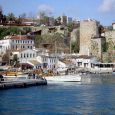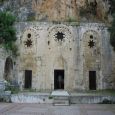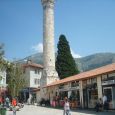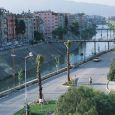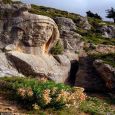Antakya
Advertisement
By Air
Domestic flights are available to Hatay Airport, 25 km from the city center.However, the nearest international airport is located in Adana, a couple of hundred kilometres to the north.The 'Havas' bus runs from the airport hourly to the city centre for 9 lira, and takes around 20-30 minutes. If you need to get back to the airport, the Havas leaves from the front of the 'Buyuk Antakya Hotel' (on the river, close to the Mosaic Museum; it' a huge resort style hotel, you can't miss it) every half hour most days, but check the Havas website for specific departure times.This is a lot cheaper than a taxi! Please note that you will have to flag the Havas bus down from the front of the hotel, as not many people utilise this service, so make your presence known as it drives past.
By Train
The nearest station is in Iskenderun, which has several daily train connections with Adana and Mersin.
By Bus
Has Turizm operates comfortable buses from all major cities in Turkey.There are also bus connections with Aleppo, Syria.The otogar is located about 7 kilometers from the city center. Once you arrive look for minibuses to take you within walking distance of the center.Many of the hotels are located on Istiklal street.
Antakya Archaeological Museum
started in 1934 on the recommendation of the French archaeologist, M. Henri Prost. It was completed in 1938. In 1939, when a plebiscite united the province of Hatay with Turkey, the museum came under Turkish control. It was reorganized and reopened in 1948. In 1975 the Antakya Archaeological Museum was reopened once again, after modern reorganization.Hatay has a rich collection of mosaics. The works in the museum are arranged according to where they were found. There are objects found by excavations carried out by the London British Museum, the Chicago Oriental Institute and Princeton University. Excavations have been carried out at barrows, tells and ruins such as Guneyde, Dehep, Catalhoyuk, Tainat, Al Mina, Ac-ana, Defne-Harbiye and so on. There is also a collection of objects from Antakya and its surrounding regions. The works are exhibited in the seven rooms and two halls of the museum.Exhibited in nine cases in the Treasury Room is women's jewelry from various different periods. They were made of gold and other valuable metals.
Church of St Peter
is composed of a cave carved into the mountainside on Mount Starius with a depth of 13 m, a width of 9.5 m and a height of 7 m. This cave, which was used by early Christians in the Antakya region, is one of Christianity's oldest churches.The founding of the church in Antioch can be traced to the Bible's Acts of the Apostles (11:25-27) where it is related that Barnabas travelled to Tarsus to bring Paul the Apostle there. They worked for one year with the nascent Christian community, and there the converts were called Christians for the first time in history. Christian tradition considers Peter, the first Apostle, as the founder of the church of Antioch, and the first priest of the Christian population that was established there; the Church of St. Peter is regarded by tradition as on the spot where he first preached the Gospel in Antioch.Although it is a museum today, it is possible to perform ceremonies inside the church under the inspection of the Museum Management by obtaining a permit from the Office of the Provincial Governor.
Buyuk Antakya Park
is the park that is located just in the midst of the city, by the River Asi and behind the famous mosaic museum of the city. Many locals visit the park during the day, and especially early in the morning to do sports. Note that there are many open air tea houses within the park, hence it's the address to go for a tea or coffee or hookah when the weather is nice.
Titus Tunnel
is a Roman engineering marvel. During the reign of Emperor Vespasian (69-79 AD), the Roman governors of Seleucia Pieria (Samandag), the port city for Antioch ad Orontes (Antakya), decided to divert a river.They put Roman legionnaires, sailors and prisoners to work cutting a channel along and through the rock for about 1.4 km (nearly a mile).Continued under Emperor Titus (79-81), inscriptions tell us it was completed during the reigns of the Antonine emperors decades later.Today the channel is dry, but still worth a visit.A small parking area and entrance is just inland from the beach at Samandag. A path ascends along the channel, open to the sky, up and down steps and rocks, to where an arched limestone footbridge crosses.Above the footbridge, the channel continues into the solid rock.You'll need a powerful flashlight/torch to continue.
January - May
September - December


